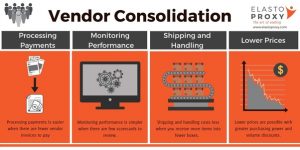
www.navy.mil
Philippe Grenier
Production Coordinator at Elasto Proxy
Rubber and plastic materials for marine applications must be able to withstand water, saltwater, wind, sunlight, temperature extremes, and other environmental conditions. Whether on the high seas or in coastal waters, part failure can sink product designs. For marine buyers and ship builders alike, smooth sailing means choosing the right compounds. Boats are built of many different materials, of course, so rubber and plastic parts must also support larger designs that include metals, composites, and wood.
Missions and Choices
Standards for civilian and military shipbuilding can and do differ, and pleasure craft such as yachts and sailboats have different “missions” than frigates and littoral combat ships (LCS). When choosing marine rubbers and marine plastics then, technical buyers may need to account for program and application requirements along with designs and environmental conditions. A compound that’s right for a window seal on a commercial fishing boat may not be recommended for muffling the sound of its diesel engine.
Despite these differences, many marine vessels use the same general types of rubber and plastic products. In addition to seals and insulation, boat builders need to source rubber trim and plastic bumpers. By working with a supplier who listens to your needs and analyzes your requirements, you can find reliable off-the-shelf or customer-fabricated solutions. With specialty seals and custom insulation, there are many options available. Even an anti-slip pad must be right for marine environments.
Seals and Insulation
Ships and boats need high-quality rubber products – including for watertight compartment sealing. Parts such as a latch seal on a ship’s deck, a porthole or window seal that’s close to the waterline, or an access hatch seal for an engine room serve important functions. Depending on the type of marine engine, the door seal on a fuel tank must be able to resist specific petroleum products such as gasoline and diesel fuel. Remember, too, that some two-stroke outboards can use ethanol-blends. Alternative fuels such as biodiesel blends are more common on land, but you may need to account for their use at sea.
Seals aren’t the only rubber products that can require specialized characteristics. Acoustical and thermal engine bay insulation is also critical. Thermal insulation is designed to absorb heat from a boat or ship’s engine compartment. Often, silicone is used because this synthetic rubber can resist high temperatures while providing acoustic insulation from high-decibel diesel engines. Self-extinguishing firestocks and custom composite insulation are also available. By building sandwich-like composites, custom fabrication specialists can form application-specific shapes and thicknesses
Trim and Bumpers
Civilian ships such as yachts, sailboats, tug boats, and fishing vessels also use parts such as rubber trim and plastic bumpers. Naval ships aren’t built for commerce or pleasure, but these durable watercraft still need door, window, and edge finish trim as well as window channels. Sealing and insulation are also mission-critical. As the image that accompanies this blog entry shows, the first LCS in the U.S. Navy, the USS Freedom, has several rows of windows.
Since our founding 25 years ago, Elasto Proxy has served both the military and maritime industries. Today, light-up rubber bumpers are one of the many solutions that we offer. Equipped with long-lasting, energy-efficient LED lights, each elastomeric bumper is designed to illuminate the location of quays, pontoons, docks and embankments while protecting marine structures against impact by boats or ships.
How Can We Help You?
Do you need help sourcing marine rubber or marine plastic materials? Would you like expert assistance with seal design and custom fabrication? Could an off-the-shelf, out-of-the box sealing solution help you to cut costs and speed production? Contact us, request a quote, or just join the conversation. We hope to hear from you.
Look for a link to this blog entry on LinkedIn, Facebook, Google+, and Twitter. Elasto Proxy has a YouTube channel, too. Finally, I hope you’ll subscribe to our free e-newsletters. They’re a great source of information delivered right to your email inbox, and they provide links to blog entries like this one.









